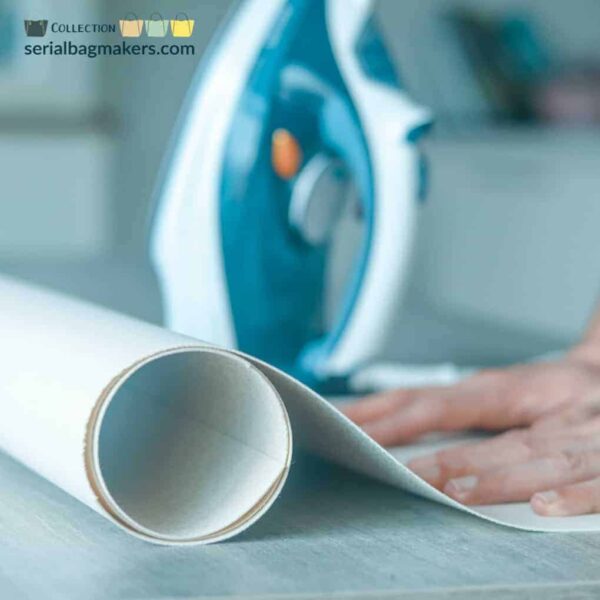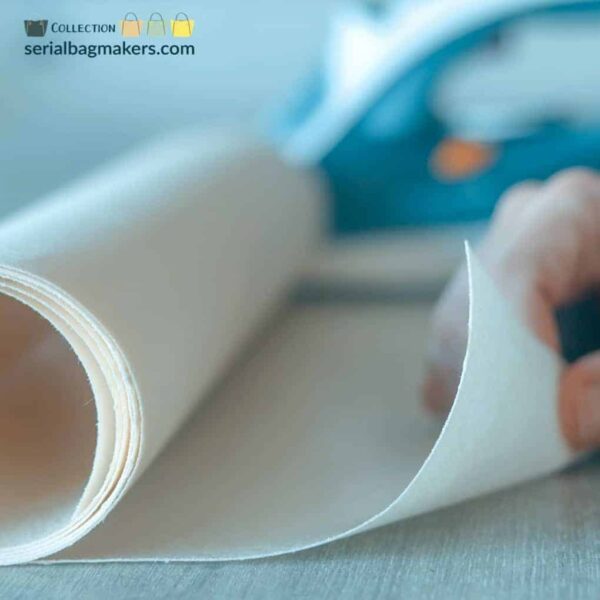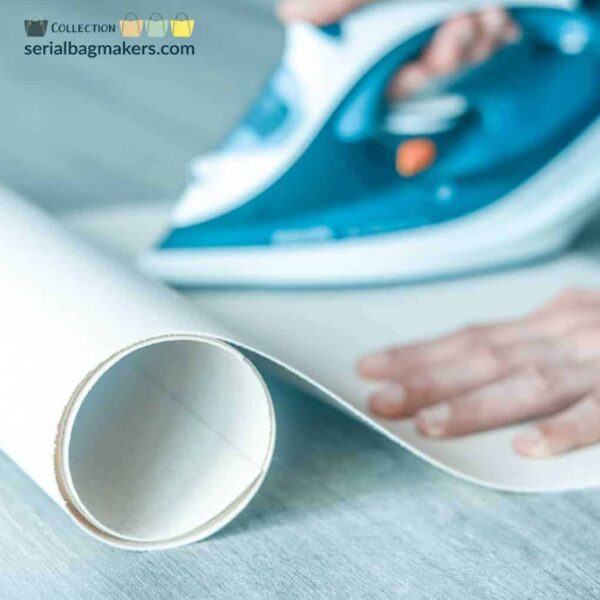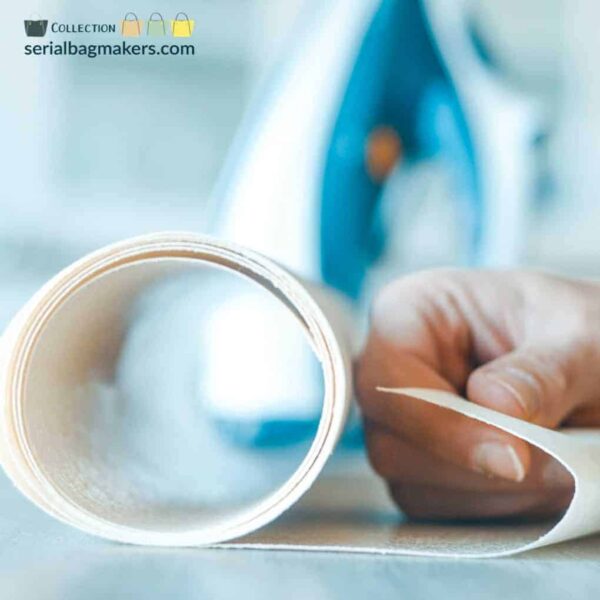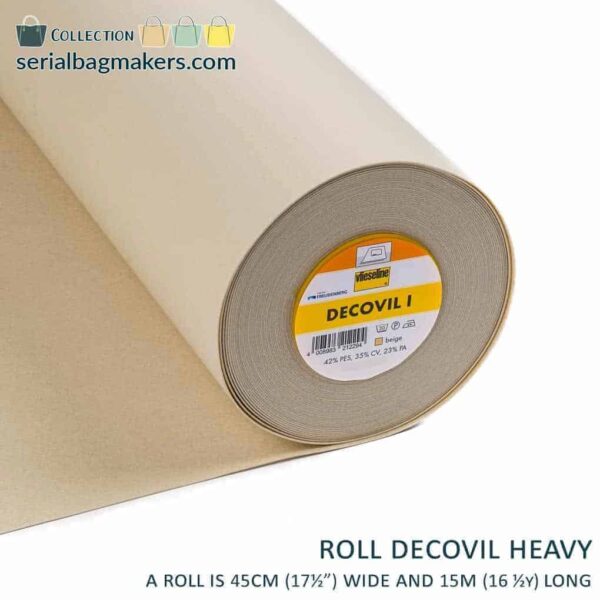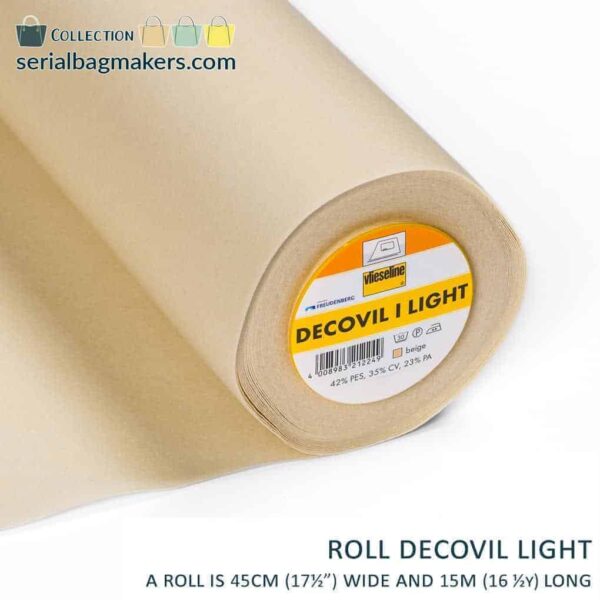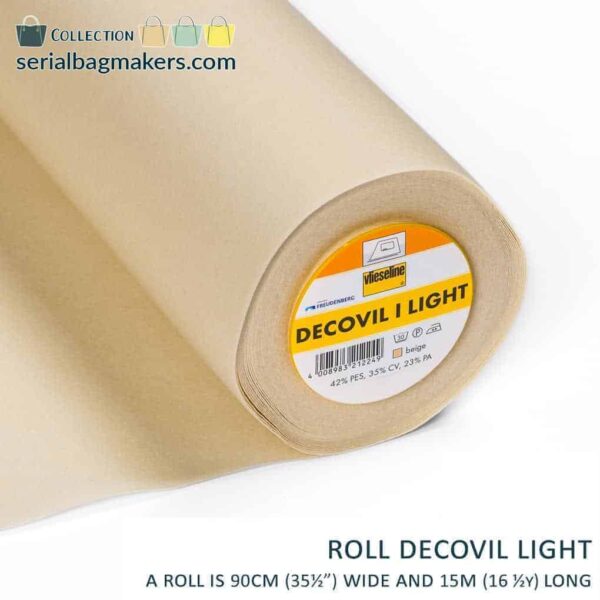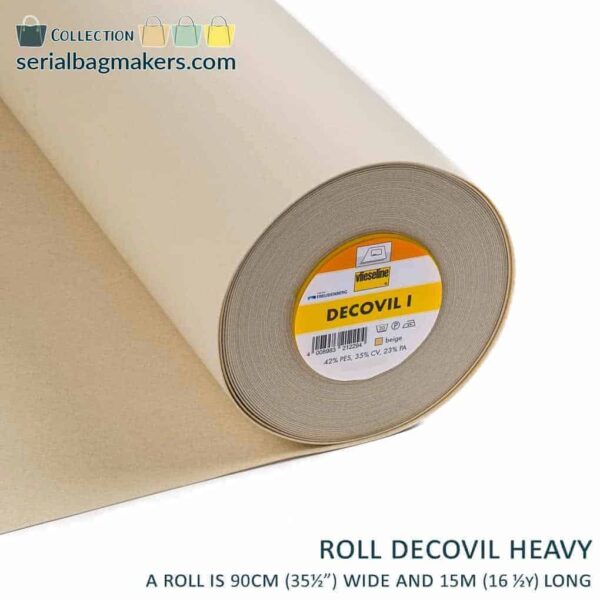What is Decovil I?
Decovil I and Decovil I Light is a beige non-woven fusible stabilizer I use a lot in my patterns. It’s a unique non-woven stabilizer that doesn’t fray and is tear-resistant. It’s one-side fusible and fuses very well. It feels a bit like leather. The magic, on the other hand, only happens after you apply the interfacing. At first, the interfacing doesn’t seem very rigid. It has a dense consistency but is soft and flexible. After fusing it will show its real nature: your fabric remains flexible, but will be a lot stiffer.
The reason Decovil I and Decovil I Light are playing in another league than most other interfacings and stabilizers is the effect it gives after applying. Decovil I fuses well and leaves the surface of the fabric smooth. It just gives a very professional look without creating wrinkles or creases. Your work remains smooth even when you bend it.
Decovil, Decovil I, Decovil Light, Decovil Heavy: please enlighten me.
The name of this product is written as Decovil I (a Roman number 1). In the beginning, there was only Decovil I. People lost the I when describing the product. The I is part of the name. So you have Decovil I light and Decovil I. Decovil I being the heavy Decovil.
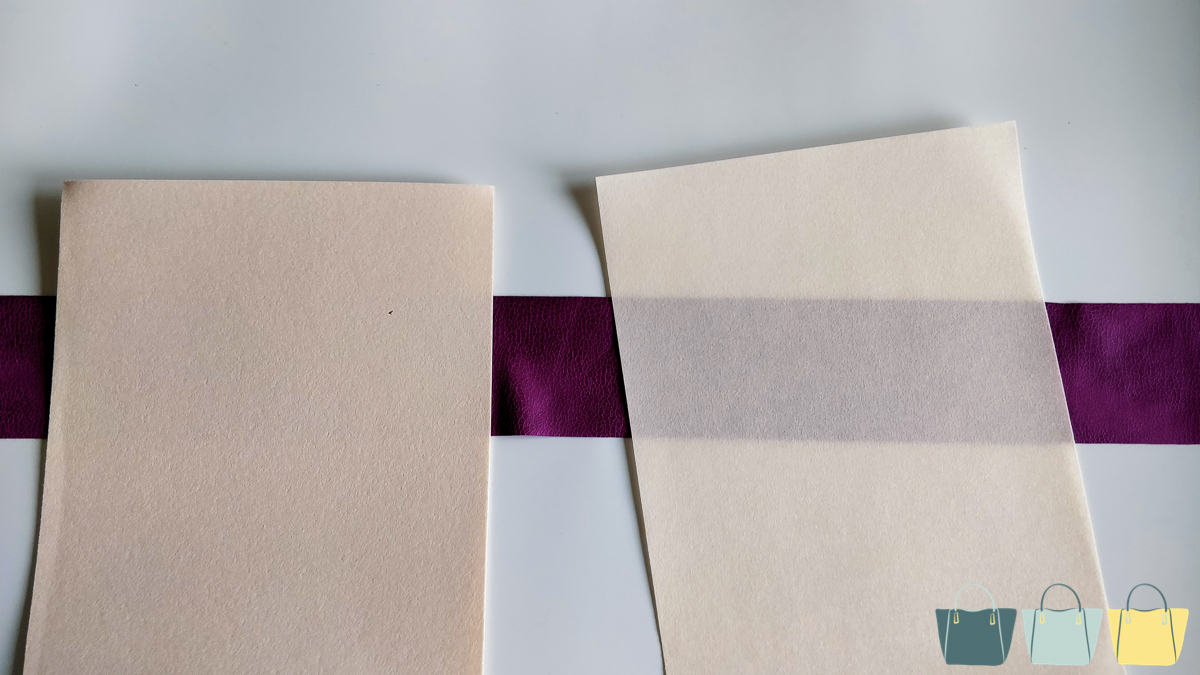
How does Decovil behave?
Decovil I (also called Decovil Heavy) is a lot thicker than Decovil Light. Depending on the bag you are making, adding a little bit of volume to your fabric is the desired thing. Stiff and flat interfacings do not look good in bags, and neither do the thick, puffy interfacings since they create a more homemade look. And no one wants to aim for that. That is why Decovil I is perfect for that.
Decovil is very flexible and bendable compared to “regular’ stabilizers (especially the ones you would use for bags). Do not use it when you want a slouchy effect. Decovil I doesn’t deform. No matter how many times you bend it, your project will stay flat, and your items will end up having a smooth surface and a great shape. Especially when using Quilting weight fabric, you will benefit from the qualities of Decovil I: it will give your items a real professional look AND touch, just like you would find it with store-bought bags and wallets.
Sewing and usage
Decovil I is excellent for sewing bags and wallets. It’s also great for making hats, belts and other accessories. You should not use it on all the pieces of your item. Only those parts that will shape your handbag or wallet. Use it for the bottom of small bags if you are not expecting super rigid support. There are other – cheaper – options for the bottom of your bag. The thickness and stiffness are perfect for wallets and flaps in bags. In both cases, you insert the Decovil I after you have turned the bag or wallet. You do not want to birth the Decovil I. Decovil I is easy to sew through, but you are not supposed to do that. At least not in your seams. While it’s easy to sew through it’s a pain to fold it crisp in your seams (hence why its so perfect, since it’s virtually not possible to make creases in it). You definitely should trim the seam allowances off the pieces of Decovil I before fusing it. Turning it right side out through an opening in a lining may not even be possible. For that reason, it’s better to place the stabilizer inside your project at the end of the sewing process.
Tricks of the trade
First, fuse a layer of regular woven interfacing on your fabric and on top of that fuse the Decovil I or Decovil I Light. When fusing, set the heat a little lower and keep your iron at least 8 seconds on every spot. It’s better to prolong the time than to set the temperature higher. Let your fabric with Decovil cool for at least 30 minutes on a flat surface before you work with it. The glue in the Decovil needs time to adhere entirely to your fabric and those thirty minutes cool-down period will grant you with a perfectly working material. In all circumstances, do not have Decovil in your seam allowance. If you do not have separate pattern pieces for it, cut the Decovil piece without the seam allowance and place it centred onto the wrong side of your fabric (the shiny side of the Decovil is the glue side), making sure you have no Decovil inside the seam allowance of your fabric. When sewing, make sure to let the needle run precisely along the edge of the Decovil part.
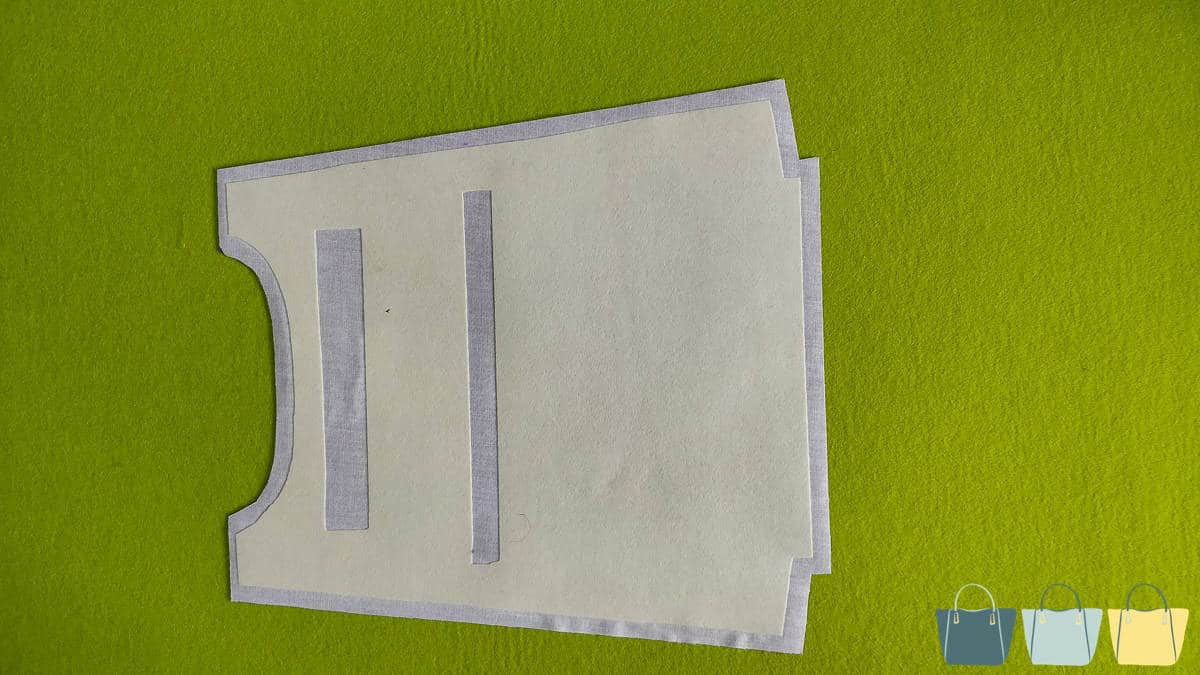
Sometimes it’s better not to fuse
Sometimes it’s better to not fuse the Decovil on the fabric at the beginning since you want to avoid having to turn your bag or wallet right side out when the Decovil is fused on it. Instead, turn the item right side out and only then slip the Decovil inside before closing it up. Make sure everything lays flat and sits perfectly in your project and then close the seam and iron it. Take into account the seam allowance and the corners and cut your Decovil ⅛” on all sides smaller than the pieces without SA. Also, round off the corners. You’ll end up with such a great finished article.
Are you supposed to get rid of all your other stabilizers?
No. They all have their merits. So far, we didn’t find any other stabilizer that gives a similar, unique effect that Decovil I will provide you with. Decovil is manufactured by Freudenberg for Vlieseline and Pellon. In the United States, Decovil Heavy is sold as Pellon 526, and Decovil Light is sold as Pellon 525.
Where is this magical product sold?
In my shop, I sell Decovil I Heavy and Decovil I Light. I sell the 45cm and the 90cm both by the bolt and by the yard. I ship worldwide with the normal post office or DHL express courier.
